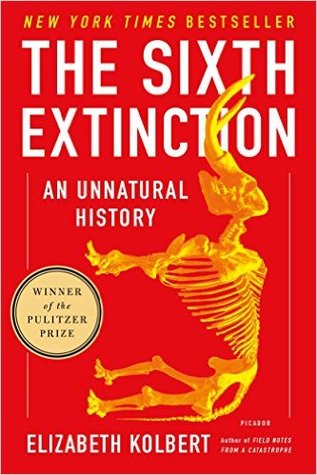More on this book
Community
Kindle Notes & Highlights
Read between
February 24 - March 17, 2024
In fact, the American mastodon vanished around thirteen thousand years ago. Its demise was part of a wave of disappearances that has come to be known as the megafauna extinction. This wave coincided with the spread of modern humans and, increasingly, is understood to have been a result of it. In this sense, the crisis Cuvier discerned just beyond the edge of recorded history was us.
the impact hypothesis. On an otherwise ordinary day sixty-five million years ago, an asteroid six miles wide collided with the earth. Exploding on contact, it released energy on the order of a hundred million megatons of TNT, or more than a million of the most powerful H-bombs ever tested. Debris, including iridium from the pulverized asteroid, spread around the globe. Day turned to night, and temperatures plunged. A mass extinction ensued.
It is now generally believed that ice ages are initiated by small changes in the earth’s orbit, caused by, among other things, the gravitational tug of Jupiter and Saturn. These changes alter the distribution of sunlight across different latitudes at different times of year. When the amount of light hitting the far northern latitudes in summer approaches a minimum, snow begins to build up there. This initiates a feedback cycle that causes atmospheric carbon dioxide levels to drop. Temperatures fall, which leads more ice to build up, and so on.
In its magnitude, the temperature change projected for the coming century is roughly the same as the temperature swings of the ice ages. (If current emissions trends continue, the Andes are expected to warm by as much as nine degrees.) But if the magnitude of the change is similar, the rate is not, and, once again, rate is key. Warming today is taking place at least ten times faster than it did at the end of the last glaciation, and at the end of all those glaciations that preceded it. To keep up, organisms will have to migrate, or otherwise adapt, at least ten times more quickly.
For most of the Pleistocene temperatures were significantly lower than they are now—such is the rhythm of the orbital cycle that glacial periods tend to last much longer than interglacials—and so an evolutionary premium was placed on being able to deal with wintry conditions. Meanwhile, for two and a half million years, there’s been no advantage in being able to deal with extra heat, since temperatures never got much warmer than they are right now. In the ups and downs of the Pleistocene, we are at the crest of an up. To find carbon dioxide levels (and therefore, ultimately, global
...more
“When the chronology of extinction is critically set against the chronology of human migrations,” Paul Martin of the University of Arizona wrote in “Prehistoric Overkill,” his seminal paper on the subject, “man’s arrival emerges as the only reasonable answer” to the megafauna’s disappearance.
Megaherbivores generate mega amounts of shit, as is clear to anyone who’s ever spent time standing behind a rhino.


